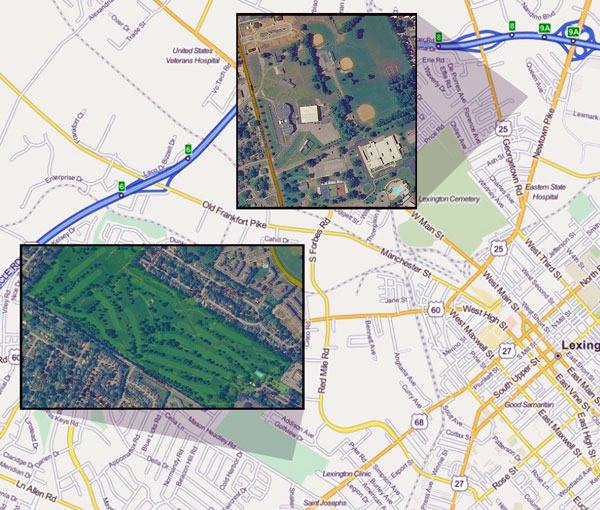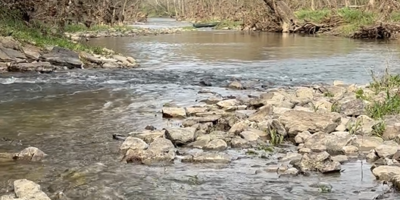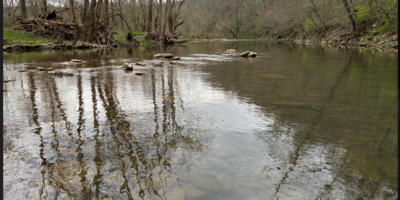The NoC pitch
FUC Mayor Jim Gray has called on area residents to offer their ideas for the Mayor’s Challenge, a competition funded by the Bull Connor billionaire mayor of Wall Street, Michael Bloomberg, to generate innovative and bold local solutions to national problems. Grand prize winning bold idea will receive $5 million, while four less-bold runners-up will each receive $1 million. Successful ideas will be able to be replicated in other cities. Below is the NoC pitch.
Our Bloomberg’s Millions idea leverages our public parks as potential sites of neighborhood and regional commerce and contact. Specifically, we will utilize Bloomberg money to create infrastructure and pay 3-years of operating costs to establish a series of farm/markets upon county park grounds.
The Park Market idea is animated by two chief, mass-producible, goals. First, it prioritizes public entry into the local food market as a good that ensures county residents have needed access to affordable sustenance. Second, it helps stimulate the private local agricultural sector by increasing the number, location and types of markets that consumers might access, sets a market floor for local agricultural products, and demonstrates an unequivocal public support necessary to spur private development.
Our local model for Park Market development is grounded in our county’s historical connections to the Kentucky River, whose waters have wetted our agricultural fields, transported our families and products hither and yon, and provided space for fellowship and congregation amongst a diverse population on the move. We pay special attention to the figure and grounds of the lock-master—public servants who lived onsite at the river in simply constructed, architecturally gorgeous, government homes; operated the locks that allowed Eastern Kentucky resources passage into a regional and world market; and cared for the lands around the locks.
Our winning idea is organized around the hiring of two “park-masters,” who will live on-site at two different county parks. The park-master’s primary job will be to farm a specified amount of park land for Fayette-brand products sold at county-organized markets. Additional seasonal duties might include organizing and doing clean-ups of the grounds, managing part-time and donated labor, providing public direction/ideas for wise use of the area they oversee, and otherwise operating as an unofficial advocate/liaison for the park. Here in Lexington, we imagine ideal candidates coming out of UK’s sustainable agriculture program, with part-time paid and volunteer labor provided by groups ranging from our newly built Locust Trace Agricultural High School students to neighborhood associations and domestic violence programs.
Park-masters will be supported by two commercial over-seers, whose job it will be to develop and work markets to hawk park products at three to four park sites. Subordinate and related duties will include market outreach (growing markets by attracting private producers of local goods to vend alongside); occasional aid to the park-master; and unofficial advocate/liaison for the park system.

A proposed Picadome Permaculture Park and the already-in-existence Douglass Park could provide excellent market spaces to knit the city’s “north” and “south” ends.
To flesh out these ideas, we offer a breakdown for how we would spend the $5 million of Bloomberg money in Lexington to make Park Markets happen. We offer the numbers to highlight how we prioritize and integrate our park market idea with other county needs, and not necessarily as set-in-stone figures. The general idea is to have both a northern and southern central market to operate year-round from a storefront, outlying smaller markets that (if there is neighborhood demand) have the potential to expand, and a revamped transportation service that uses the Park Markets to better knit the city together.
Infrastructure ($2 million)
Most of the infrastructure money will fund the development of two park-master/market locations, while the remaining amount will fund light-footprint developments at parks throughout the county.
Picadome Permaculture Park ($725,000): Transform the publicly funded 100+acre Picadome golf course into a permaculture park. Located where Broadway meets Waller Avenue, the Picadome plot connects much of south Lexington. We echo Councilmember Jay McChord’s vision to repurpose the course as a city park. As McChord notes, since water and paved carts are already in existence there, infrastructure costs will be minimal. Cart paths can easily become walking and bike paths, and the water used to make Bermuda grass fairway-worthy can be used instead for agricultural watering of fruit and nut trees, berry bushes and annual vegetable production.
While the park-master house may be nestled deep inside Picadome as an architectural feature for walkers, joggers, hikers and bikers, four commercial buildings will cluster on Broadway and feature a public bus stop that provides shade. Of the commercial buildings, our plan calls for the city to sell two in order to generate capital and stimulate local business in the area. The remaining publicly owned commercial fronts can house the commercial over-seers on the second and third floors, while at the same time provide first-floor indoor vending space to sell area goods and any products produced at the park by park-masters.
Douglass Park Market ($675,000): The second showcase park master/market site, Douglas Park sits along well-traveled Georgetown Street, mere blocks from the recently constructed Legacy Bike Trail. Money here will fund the construction of a park-master house/storage, and the purchase/renovation of commercial buildings located on Georgetown across the street from the park.
Other grow/market places ($600,000): This money is set aside for the creation of different types of growing fields and temporary stands for entry into smaller markets at other locations throughout the county.
Transportation ($1 million)
Investing in transportation has two key labor and commercial interests for our markets. First, providing public transportation to and from the markets provides a greater demographic of market-goers and park-goers—it potentially includes the entire city, not just car-drivers. Second, we see an as-yet-untapped market in local tourism, by which we mean the circulation of area residents throughout the city in search of unique low-cost activities they would otherwise find on vacation. Bus service can be the vehicle that spurs this sort of micro-local tourism.
Indeed, an important secondary goal of the park markets is to provide funds for the city to expand upon, and in some cases rethink, its transportation strategies. Currently in Lexington, the downtown area functions as a barrier for north/south movement through the city. Busses leave and disembark from the city’s downtown station, which means that passengers are unable to pass through the city to reach their destinations. Instead, they must stop at the downtown station to locate their transfer busses, an altogether inefficient process.
Most of the transportation money will underwrite the creation of a north/south bus-line that connects Douglass and Picadome Parks. This line, a park line, will be the prime meridian for routing additional horizontal lines that will route into Douglass, Picadome and other county parks. It may help fund the creation of a circular New Circle route. In addition to providing residents public transport to a market and park area, these lines should also aim to better meet the needs of the growing suburban population who lack cars.
The remaining transportation money will be used to re-brand the Lexington “wagon spoke” road system as a bike-friendly “spoke-and-rim” system. The redevelopment of Picadome, whose land connects the western UK development nearby Broadway, the student-centric area around Red Mile Road and (via Addison and Pine Meadows Parks) the Cardinal Valley neighborhoods surrounding Versailles Road, will provide a great hub from which to develop the (currently broken) bike spoke system. In addition, Douglass Park’s proximity to the Legacy Trail, along with its position as a backdoor gateway to the Leestown corridor, make it another important spoke in the city’s bike system.
Labor ($1.5 million)
In addition to creating infrastructure and transportation, Bloomberg’s money will pay labor costs on the Park Market developments for three years. This will allow residents and leaders the time needed to analyze and tweak the Park Market idea without having to succumb to market pressures. Our projected labor costs break down as the following:
Park-masters: $375,000 inclusive of carrying costs.
Commercial overseers: $375,000.
Part-time labor: $750,000.
Outreach, programming, advertising ($500,000)
In addition to transportation funds, a small amount of Bloomberg money will underwrite park activities that will have the byproduct effect of attracting potential customers to the market stores. These might include music entertainment and mini-festivals, disc-golf or basketball tournament support, the advertising of market days, partnerships with social, agriculture, neighborhood and arts groups, etc. etc.




The Office of...
Dan, your submission has been received. Thank you for sharing your idea for improving Lexington .
The Office of Mayor Jim Gray